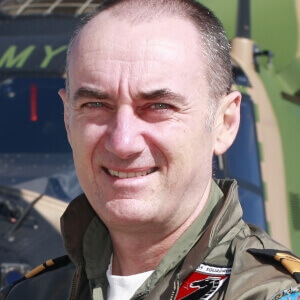RADM Tony Dalton explains CASG’s path to creating an organisational framework with less red tape and being easier to do business with.
To continue reading the rest of this article, please log in.
Create free account to get unlimited news articles and more!
I recently spoke at the HunterNet Defence Conference in Newcastle. Speaking with industry, I touched on our role as CASG – we are here to equip and sustain the ADF – and how, from my perspective, it is incredibly important to keep the young Australians who use the equipment we provide and sustain front of mind in all we do.
The Department is undergoing significant reform. Last year the old DMO was merged back into the Department proper, so it is no longer a prescribed agency, and reconstituted as CASG. Implementing the First Principles Review outcomes is changing the face of the organisation and we are now well down the reform path.
A key element of the reform process is to improve our relationship with government, which in addition to the Minister for Defence, Senator Marise Payne, now also includes the Minister for Defence Industry, Christopher Pyne, and our capability managers – all six of them.
Industry is now considered a Fundamental Input to Capability. Put simply, we can’t deliver without industry. The Defence Industry Policy Statement released at the same time as the White Paper in February this year highlights exactly where industry fits into the big picture. As a result, a lot of the reforms are there to improve the visibility industry has of what we are doing, to get that visibility earlier, and to reduce the cost of doing business with Defence.
This is important. We do need to be more transparent, and the reforms are driving us down this route.
We do need to continue to focus on our staff – as the reforms bite, the nature of the work we do internally will change. For example: we will move away from the transactional towards the governing and planning end of the spectrum. Our people will require new skillsets and mindsets and we will support them on this journey.
Here is a how CASG looks at a glance:
Full time workforce ~ 5300 – 3900 APS, 1400 ADF
- 25 per cent of APS, 8 per cent of ADF
- 25,000 Australian Defence Industry jobs
196 active major and minor capital equipment projects
- $107.5 billion in book value
- $7.2 billion this FY
109 sustainment product schedules
- $5.7 billion this FY
Total annual budget this FY $13.6 billion
- 42 per cent of total Defence budget
- 3 per cent of total government outlays
- We are spending ~ $50 million per day
Integrated Investment Program
- $195 billion over next ten years
And yes, you read that right. CASG is spending approximately $50 million per day.
The number of projects in flight is a mix of around 150 major acquisitions, around 30 minor acquisitions and 15 or so urgent operational acquisitions.
We use “product schedules” to manage like items in sustainment.
The scary thing is the growth forecast in the Integrated Investment Program (which was released with the White Paper) – if nothing else, this is the obvious reason why CASG has to reform. We have to be able to digest this growth to continue to effectively support those young Australians on the front line into the future.
This is the model we are now taking all new capability proposals through:

Here is a snapshot of the acquisition reform:
Smart Buyer
- Taking a risk based approach to projects and sustainment;
- Improved acquisition and sustainment strategies based on the risk assessment;
- Putting resources where the risks are; and
- Stronger, more savvy and strategic engagement with industry.
Business Framework
- A single, tailorable way of doing business; and
- Based on industry and external best practice.
Organisational Change
- Removal of layer of senior managers;
- Leaner organisation, especially for sustainment;
- Greater spans of control;
- Greater use of matrix functions; and
- Better alignment to customers.
In place by mid 2017
Rest assured - these reforms are under way. We have seen examples of early industry engagement in the ship building forums.
What we are after is a simpler business framework with less red tape.
Significant organisational change has already occurred across the group. One of the more significant to come will be moving CASG towards a “balanced matrix” organisation.
We will reorganise into six centres of expertise that run across the group horizontally (and manage the workforce and policy in broad “job families”) with the domains (in which SPOs will manage the acquisition and sustainment business) running vertically across the group. Individuals will be managed by their CoE but will work (and identify) in their SPO.
This will give us greater visibility across the organisation and allow us to better prioritise our workforce.
Rear Admiral Tony Dalton
Rear Admiral (RADM) Tony Dalton is the Head of the Joint Systems Division. In this role RADM Dalton oversees the acquisition and sustainment of the Australian Defence Force’s joint systems covering electronic warfare, communications and command support, satellites and tactical interoperability, surveillance and control systems, and guided weapons.
RADM Dalton has decades of Defence experience having joined the Royal Australian Navy in 1980 as a direct entry aviation midshipman. He has amassed over 5500 military helicopter flying hours and has extensive experience as a Sea King and Seahawk flight pilot, a display pilot and as a qualified helicopter instructor. He served as Executive Officer of 816 Squadron in 1996 and Commanding Officer of 805 Squadron in 2001.
RADM Dalton has held a number of senior operational and acquisition and sustainment management positions including Commander Fleet Air Arm in Navy and Director General Navy Aviation Systems and Head Helicopter Systems Division in the then Defence Materiel Organisation.

 Login
Login








